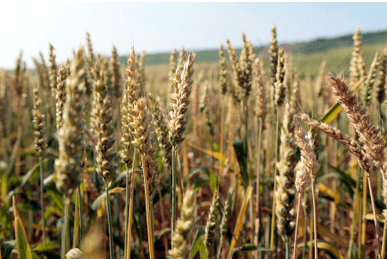PARIS—This year seems to be atypical for agriculture in the French region Île-de-France. With no less than 11.9 million inhabitants, or 19% of the national population, one could easily think that agriculture holds a nearly non-existent place in the region.
Yet, the population in Île de France fills only 21% of the territory. The other 79% are divided between woods, forests (23%), farmland (50%) and others (6%).
The county of Seine et Marne holds the widest agricultural spaces with 56% of its total surface. Then come the counties of Essonne (45%), Val-d'Oise (44%), and Yvelines (39%). The main crops are cereals like soft wheat, corn or barley, oleaginous plants such as rape, and beetroots. Horticultural and vegetable productions are slowing down since 1988, but are still present in the inner suburbs of Paris. Île de France reaches the first national rank in the production of watercress and parsley, and the fourth national rank in production of lettuce.
2014 will be remembered for an unusual harvest. The exceptional weather conditions – an autumn too wet, the absence of frost in winter, and a dry spring – have favored the abundance of crops, but also the deterioration of the quality of cereals and the protein rate.
According to the Terre-net.fr website, “while the yield seems good for rape, barley, and wheat, their quality have worried the cultivators as well as the organizations that are going to stock these crops.” 20% of the wheat that has been harvested so far in the counties of Essonne, Yvelines, and Val-d'Oise, shows a decrease of the nutritive quality. Since half of the French production is aimed at exportation , this quality loss could benefit the big wheat producers from the Russian plains and the Black Sea.
This quality downgrade could be caused by the intensive agriculture and the pesticides that impoverish the ground every year.
Moreover, the first concern of the cultivators in Île de France comes with the progress of urbanization. In 50 years time, 100,000 hectares of farmland has disappeared to accommodate the expansion of Paris. Every year, 2,000 hectares are transformed into urban spaces. For instance, the plain of Montesson harbors a soil particularly conducive to vegetable growing. But these fertile agricultural grounds are threatened to be transformed in a joint development zone, while the region has other unoccupied fields that won’t be exploited.
In an effort to promote direct trade from producer to consumer, the Inter-county Office of Agriculture in Île de France is arranging many projects in order to facilitate the contact between the residents and the cultivators of the region.
For instance, the meetings of Vile-Campagne (City-Countryside) allow the elementary school students in the counties of Val d'Oise, Yveline,s and Essone, to discover the profession of agriculture.
On October 18 – 19, the Walks of Taste will invite families to visit one of the 87 participating farms to discover and taste their local products.
The Post Offices in the county of Yvelines propose to deliver boxes of fruit and vegetables ordered from small local producers to people’s homes directly. If this experience proves successful, it will be extended to other counties of the Île de France region.




